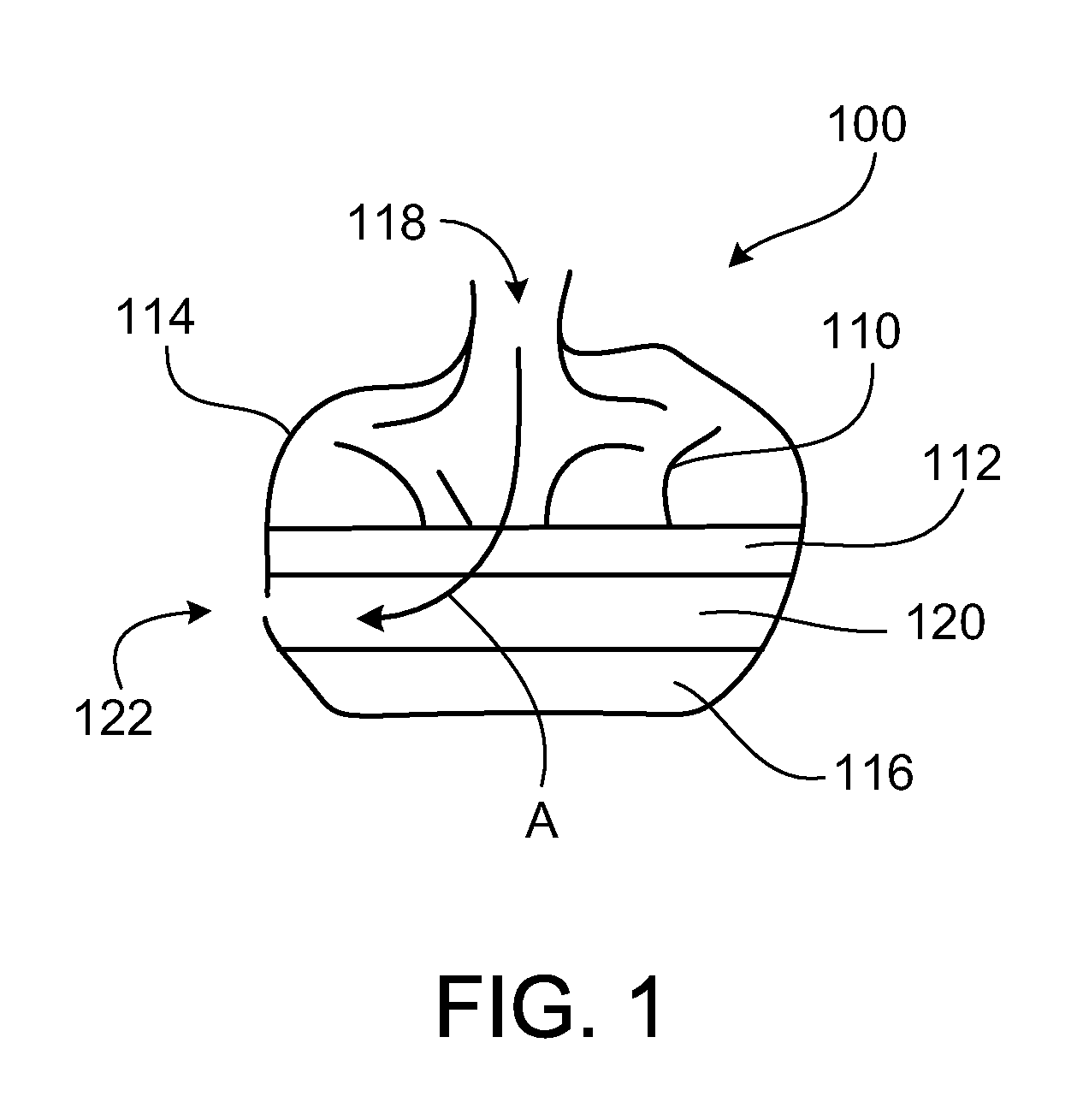Biological air filter
a technology of air filter and biological material, which is applied in the direction of lighting and heating apparatus, heating types, and separation processes, etc., can solve the problems of reducing reducing the efficiency of low-fan-speed or low-throughput apparatus in providing net reduction of undesirable substances, and increasing the overall filtration capacity. , to achieve the effect of effective filtration of air, reducing the effect of oxidative stress
- Summary
- Abstract
- Description
- Claims
- Application Information
AI Technical Summary
Benefits of technology
Problems solved by technology
Method used
Image
Examples
example 1
[0064]Referring to FIG. 2 a chlorophytum plant based air filter 200 was built and tested to demonstrate the possibility of passing air under the action of two simultaneous fans “in reverse” from the atmosphere around the leaves and through the soil of a plant. The filter includes a PLEXIGLAS® housing 210 with small fans 212 mounted on inlet and outlet openings 213, 214 of the housing. A chlorophytum 220 was planted with roots 222 in a soil substrate 224 and stem and foliage 226 extending upward from the soil substrate 224. The air impeller system, made up of the inlet fan 212 (at 213) and the outlet fan 212 (at 214), successfully drew air into the housing 210, past the leaves 226 of the plant, down through the soil substrate 224, and out of the housing 210 back into the environment.
[0065]The filter 200 also included funnels 216 attached to small openings 218 in an upper surface of the housing 210 allowed for watering of the plant over the test period. The plant filter successfully f...
example 2
[0066]Referring to FIGS. 3A, 3B, and 3C, another exemplary filter 250 was built and tested to demonstrate the feasibility of a long-lasting biological air filter. Like filter 200, the filter 250 possessed input and output fans 212 mounted in inlet and outlet openings 213, 214 of a housing 210. The housing 210 included a lower portion 253 with an aluminum exterior receiving a removable tray 228. The removable tray 228 can be filled with water to provide filter 250 with a reservoir of water, beneath a plant 252 and soil substrate 224.
[0067]The plant was placed in standard potting soil, which was atop clay pebbles supported by a fabric mesh. The mesh helped hold the pebbles and soil. A set of wicks facilitated hydration of the soil substrate by capillary forces which induced the upwards flow of water from the reservoir. In this case, the wicks were a cotton fabric. The wicks and / or mesh material used to hold the pebbles and soil could be a standard fabric, a “non-woven” material, or ce...
example 3
[0069]Efficacy tests of biological air filters similar to the exemplary biological filters were conducted in cube-shaped chambers of volume 0.512 cubic meters. Individual Spathyphillum and Orchidea phalaenopsis plants were tested in one chamber, alongside an empty control chamber. Using liquid formol, formaldehyde was released into the chambers until they were found to have roughly 25 ppm. The formaldehyde sources were then removed, and the chambers were subsequently sampled regularly for periods typically of several hours, to determine the efficacy of the filtration device.
[0070]FIG. 4 compares the results of using filters similar to the filter described with reference to FIGS. 3A, 3B, and 3C to reduce formaldehyde concentration in an enclosed volume of 0.45 m3 to the literature-reported results for a previous NASA plant filtration test. This filter reduced formaldehyde concentration to less than 20% of its initial concentration within about 1 to 1.5 hours with results. By comparis...
PUM
 Login to View More
Login to View More Abstract
Description
Claims
Application Information
 Login to View More
Login to View More - R&D
- Intellectual Property
- Life Sciences
- Materials
- Tech Scout
- Unparalleled Data Quality
- Higher Quality Content
- 60% Fewer Hallucinations
Browse by: Latest US Patents, China's latest patents, Technical Efficacy Thesaurus, Application Domain, Technology Topic, Popular Technical Reports.
© 2025 PatSnap. All rights reserved.Legal|Privacy policy|Modern Slavery Act Transparency Statement|Sitemap|About US| Contact US: help@patsnap.com



